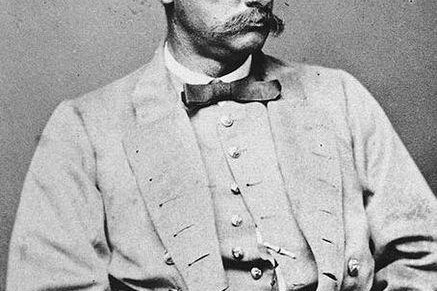General News
5 January, 2025
Neutral waters: Victorians and the American Civil War
By JOHN BARRY IN JANUARY 1865, Confederate sloop-of-war Shenandoah moored at the Yarra’s mouth IN Melbourne. In the American Civil War, the British Empire, including the Colony of Victoria, was neutral. By law, ships of both sides could be...

By JOHN BARRY
IN JANUARY 1865, Confederate sloop-of-war Shenandoah moored at the Yarra’s mouth IN Melbourne.
In the American Civil War, the British Empire, including the Colony of Victoria, was neutral.
By law, ships of both sides could be victualled and repaired. However, a neutral could not provide warlike supplies or crew.
Shenandoah was a merchantman that had been armed to prey on Union shipping.
For reasons that are not clear today, the Colony seemed to lose its collective head over the Confederate raider.
Almost every newspaper in Victoria carried a procession of articles that gushed over the handsome lines of the ship, her armament, her speed and her dashing crew.
Even her flag called for comment and praise.
Her commander, James Waddell, allowed 40,000 members of the Victorian public to inspect Shenandoah during the ship’s time in Victoria.
The crew’s stories of Shenandoah’s adventures entranced Melburnians. Her dress-uniformed officers and crew attended dinners and balls given in their honour.
Churchill Island off Philip Island still holds a signal cannon from Shenandoah presented to the island’s former owners by Captain Waddell as thanks for a formal dinner hosted by them.
In truth, Shenandoah had hurriedly set sail from Britain with barely enough crew to work her.
She was then purchased at sea by the Confederacy for $90,000. She was crewed initially by young men who had been travelling on board nearby ships.
In Melbourne, 19 of the crew deserted.
However, when the raider left Port Philip Bay nearly a month later, she was fully crewed.
Such was Victoria’s enthusiam for the Southern cause, that Victorians by the dozens signed on to fight for the Confederacy.
Once it left Melbourne, Shenandoah preyed on Union shipping, mainly whaling and fishing vessels, for the rest of the War. She sank 38 merchant vessels.
Six months after the Confederacy surrendered, Shenandoah fired the last shot of the American Civil War across the bows of a whaler off the Aleutian Islands.
With her war over,
Shenandoah faced a difficult decision. To surrender in a US port could mean piracy charges.
Confederate raiders were not covered by the surrender amnesty.
To surrender to the British meant its Victorian crew could face treason or armed rebellion charges.
Before a crowd, CSS Shenandoah surrendered in Liverpool in Britain in November 1865, flying a defunct state’s last sovereign flag.
Many Victorian crew members swam ashore to avoid criminal charges.
A judicial inquiry was held. It decided that all crew members who acknowledged the United States of America, even the southern States, would be freed.
Each member of the crew was asked what country they acknowledged.
All answered they were ‘southern citizens’. They were freed.
Nothing further is known of the crew or its Victorians.
Shenandoah was returned to the Union. It was the Confederacy’s successor.
The United States government later won $15.5 million in damages against Britain.
The British Empire had violated neutrality. All Confederate raiders had been built in British docks and sold secretly to the Confederacy. Also, British subjects from Victoria had manned Shenandoah.